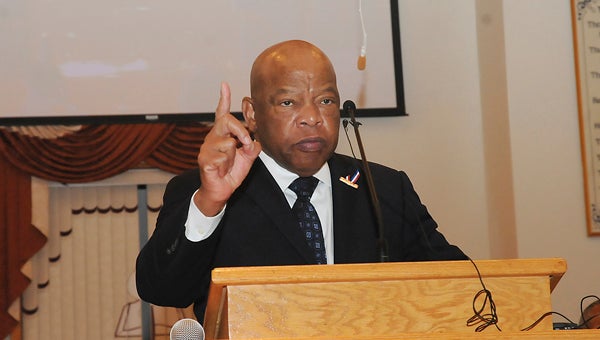Fight over election districts back in court
Published 8:06 pm Saturday, April 18, 2015
By Kim Chandler | The Associated Press
MONTGOMERY (AP) — The fight over Alabama’s legislative districts is shifting back to Montgomery after a divided U.S. Supreme Court said a lower court must take another look at whether GOP lawmakers relied too heavily on race when they drew new district lines.
James U. Blacksher, a lawyer for the Alabama Legislative Black Caucus, which filed the lawsuit against the plan, said they will fight to have the legislative districts redrawn after the case officially gets back to federal court next week. The caucus this week presented a map of proposed new lines, which Blacksher said should be a starting point for negotiations.
“Ultimately we are going to have to have another election,” Sen. Rodger Smitherman, D-Birmingham, said. “It’s going to be difficult, if not impossible, to do what the court said without having new elections,” Smitherman said.
The Alabama Democratic Conference and the Alabama Legislative Black Caucus had challenged the lines that were the drawn in 2012 under the newly elected GOP legislative majority. The U.S. Supreme Court last month reversed a lower court ruling that upheld the plan, saying the court did not properly consider complaints that state officials illegally packed black voters into too few voting districts.
Justices said the lower court should have looked at claims of racial gerrymandering on a district-by-district level, not just statewide. The Supreme Court majority also said Alabama took a position of prioritizing mechanical racial targets when drawing districts.
Instead of asking how it could maintain the minority percentages in districts, justices said, the court should have asked what percentages the minority should have to elect their candidate of choice.
“The issue now will be whether the plaintiffs proved any of these districts were drawn predominantly on race,” Alabama Solicitor General Andrew Brasher, who handles appellate litigation for the state.
Brasher predicted that the map would ultimately be upheld.
“The district court said there are a lot of other reasons to draw the lines that way.”
Republicans said their plans complied with the voting rights law by preserving all districts in which African-Americans were a majority and adjusting populations so that districts contained roughly the same number of people. The new plan, allowed only a 2 percent population difference between districts, a much lower variance than previously.
Black lawmakers said the new lines resulted in the “stacking and packing” of black voters into designated minority districts, limiting minority voters’ ability to influence elections elsewhere.
Justices put a spotlight on Senate District 26, a district that includes most of the majority-black neighborhoods in Montgomery.
“Of the 15,785 individuals that the new redistricting laws added to the population of District 26, just 36 were white — a remarkable feat given the local demographics,” justices wrote.
The Supreme Court majority, in its opinion, said, “there is strong, perhaps overwhelming, evidence that race did predominate as a factor when the legislature drew the boundaries of Senate District 26.”
“It was so obvious and so blatant what happened,” said Quinton Ross, the senator from Senate District 26.
Plaintiffs said the doubt raised by justices over that specific district is a strong indicator that they will prevail on remand.
“There will be a big ripple effect,” Blacksher said. “The problems they identified in Senate District 26 are identical to those in the other districts,” Blacksher said.
GOP legislative leaders said they believe their map will ultimately be upheld.
“I’m confident at the end of the day, district lines are going to stay like they are,” said Speaker of the House Mike Hubbard, R-Auburn.



